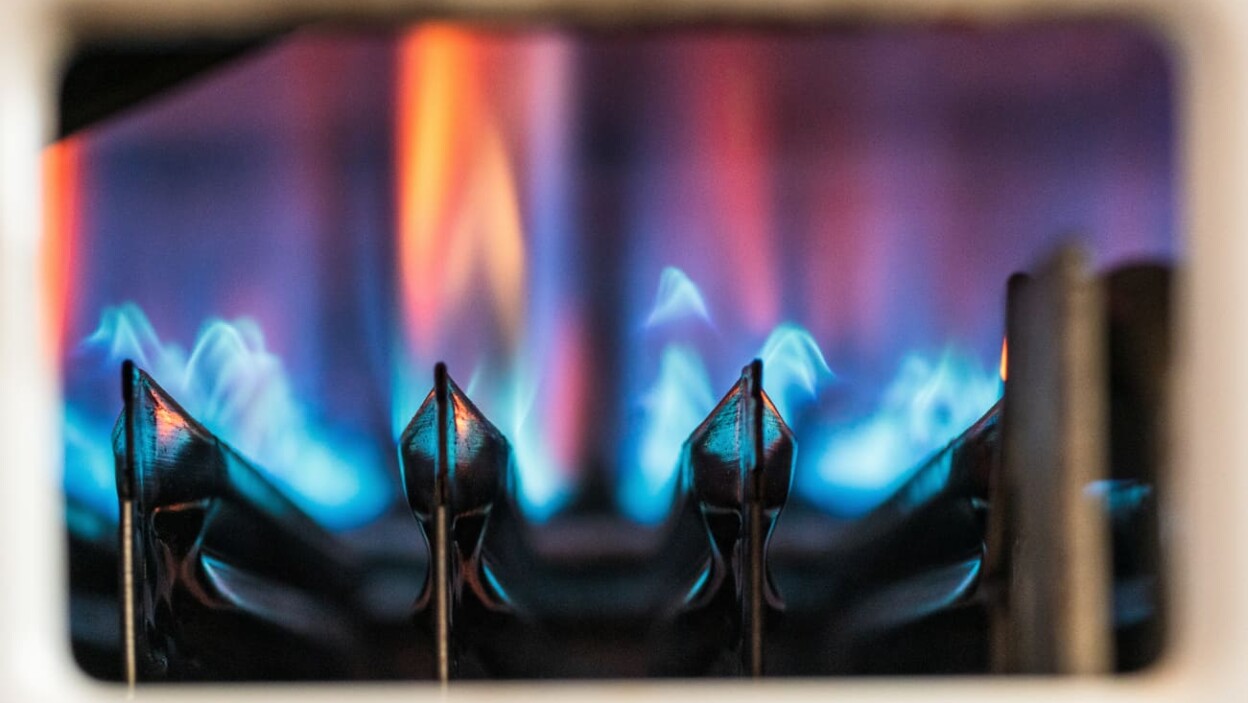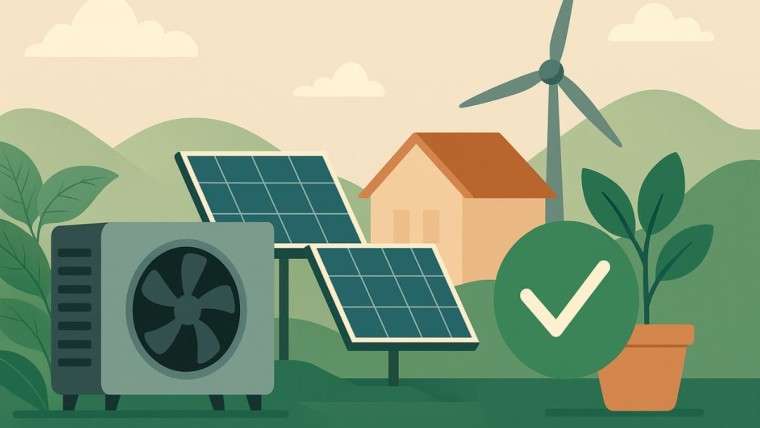Following the extraordinary increase in gas prices over the year 2021, the tariffs of this fossil fuel beat their highest levels of about 10 years ago. Without a government decision to "freeze" gas prices in November 2021, the rate would have continued to rise. If prices do not come down in 2022, the government has promised to lower taxes to regulate, so 2022 should remain stable "normally" but what does the future hold?
As if Bitcoin was crashing, the rising price of gas is causing consumer panic and interest in alternative solutions, including heat pumps. In this article we'll talk about why you might want to replace a gas boiler with a heat pump, and whether it's feasible or cost-effective.
Reasons to change a gas boiler for a heat pump (electric)
As mentioned above, gas rates can be scary This is the only way to reduce the current cost of energy and push towards a change of energy in anticipation of future increases that are too high. The great emerging powers of the planet, and their billions of inhabitants, are coming to use more and more fossil fuels for heating. As demand increases, prices will naturally rise.
On the other hand, the price of gas depends in part on the price of oil, which also, for similar reasons, undergoes significant increases as you can see every day when you pass by your gas station.
All indications are that the price of gas will not go down, as demand increases, extraction becomes ever more difficult, and energy is by nature fossil and limited.
A long-term vision of your finances, as well as a enthusiasm for renewable energy, are reasons to turn to a heat pump for heating. Indeed the heat pump works with electricity, an energy which can be created by wind, solar or nuclear power.
A willingness to consume nationally or regionally is also an argument. Today, whether in France, Belgium or Switzerland, most of the gas is imported from Norwaythe Russia, Algeria or the Netherlands.
| Main sources of imported gas | Norway | Russia | Algeria | Netherlands (EU) | Other |
| France | 43% | 21% | 8% | 11% | 17% |
| Switzerland | 47% | 24% | 3% | 19% | 7% |
| Belgium | 33% | – | – | 45% | 22% |
As can be seen, there is a strong dependence on foreign countries, European or not. With the precipitous closure of gas production in the Netherlands (shutdown of the Groningen power plant in 2022) this dependence will only increase towards distant countries.
But there's more to it than that, and there are several other reasons that may lead you down the path of gas shut-off. You may have heard of a gas ban in France?
Indeed, the 2020 environmental regulations indicates that as of January 1, 2022 is the end of gas heating in new homes. This means that it will no longer be possible for architects and other project managers to plan gas boilers in new homes! Of course you can keep your gas boiler as much as you want in your house and nobody will come to dismantle it! However this determines the willingness to stop gas and sketches a future in renewable energy in which you may or may not want to enroll.
Which heat pump to choose to replace a gas boiler?
Let's briefly recall the principle of the heat pump. It is a device that extracts calories from an external source of energy (air, water or ground) and releases them to the heating medium of your home (mainly water, and sometimes air)
There are different types of heat pumps, but in the context of a gas boiler replacement, two of them can be used. The air-water heat pump, which pumps energy into the outside air, and the geothermal heat pump, which pumps heat into the ground in the garden. (If you live near a lake, the water-water heat pump is a third possibility, which pumps heat into the water. It is very efficient in general)
How to choose between an Air-Water heat pump and a Geo heat pump?
Advantages and disadvantages of the two PAC systems
Benefits
| AIR WATER | SOIL WATER |
| Faster to install | small footprint of the machine |
| No drilling, no geological risk | Excellent coefficient of performance (COP) (4 ->5) |
| Less expensive | Acoustic and visual discretion |
Disadvantages
| AIR WATER | SOIL WATER |
| Compressor in the garden = noise | Expensive drilling |
| Ugly exterior group | Geological risk |
| COP lower than in geothermal energy (3) | More complex authorization file |
The geothermal heat pump requires a drilling in your land. This drilling is usually between 50 and 200 meters deep. You can imagine that the operation is delicate. If you don't have a garden, you can forget it. If you have a garden, you will have to accept that it will look "ugly" for some time after the drilling, or hire a landscaper. Finally, you have to bear the cost of the drilling, which quickly exceeds 15kCHF or 10k€.
In short, if you are looking for simplicity, you will quickly turn to an Air Water heat pump. It is certainly less economical in electrical energy, but it is easier and faster to install, while offering an acceptable COP and a lower investment.
How to estimate the savings by replacing a gas boiler with a heat pump?
First of all, you have to find the data of your previous annual gas consumption. In general it is directly indicated in kWh on your bill.
For example, let's take a gas consumption of 15,000 kWh per year. To obtain an estimate of your future electricity consumption with the heat pump, you can divide this value by the SCOP value indicated on the data sheets. If the SCOP is 4.5, then 15,000 / 4.5 = 3333kWh will be your probable electricity consumption. This is equivalent to 533€ per year, and about 45€ per month.
Your heat pump will therefore always produce the 15,000 kWh for your heating because this is your heating requirement. Of these 15,000 kWh, 3,333 kWh will be taken from electricity and the remaining 11,666 kWh will come either from the ground if you have opted for geothermal energy or from the air in the case of air-water.
NB : of course, in order to reduce the initial need of the house in heating energy, it is possible to rethink the insulation of the envelope. Thus the 15'000kWh could be transformed into 10'000kWh and the heat pump would only pump 2'222 kWh in electricity in our example.
If your gas bill indicates quantities in m3, then multiply them by 11 to get a rough estimate of the equivalent in kWh. 11 being a factor that corresponds approximately to the calorific value of gas. Example: 1'500 m3 of gas is equivalent to 16'500kWh. But in general the gas bills are indicated in kWh because a m3 of gas does not always contain quantity of energy according to its origin or geological origin.
How to proceed to the replacement of the gas boiler by a heat pump ? Processes and constraints.
The heat pump is a heating system
- Which works optimally if it produces water at a low temperature (35°C). Its COP will be excellent in this case.
- It works on a delta T° (difference of temperature going and return) of 5°C in general.
Based on these findings, several cases can be distinguished:
Case of underfloor heating
This is the ideal case. An underfloor heating system requires low water temperatures, which is exactly what the heat pump offers with its best performance coefficient. In this case, all you have to do is disconnect the gas boiler from the underfloor heating system and connect the heat pump (its internal module) instead.
Then it is necessary to ensure the connection between the interior module and the exterior module of the heat pump. If you have opted for a split heat pump, there is refrigerant circulating between the two modules, so you will need a real refrigeration specialist to take care of the connection. If you have opted for the monobloc version, then it will be remote pipes that will connect the two units. These pipes will have to be buried in the garden.
Case of radiators
If you have an older system with radiators. These require higher water temperatures, and a higher delta T° to ensure the necessary heating power.
While the heat pump works ideally with a certain flow rate, and a certain delta T° of 5°C, your radiators need another flow rate and another delta T°.
The solution is to decouple the system. This is achieved by installing a decoupling cylinder that separates the primary circuit (heat pump) from the secondary circuit (radiators). Each can then operate under ideal conditions on its own.
In addition to this separation of the two networks, the decoupling bottle, also known as the pressure-breaking bottle, will allow degassing and purging of the air, as well as decantation and flushing of the sludge, because the flow rates are very low in the bottle, which allows the impurities to fall to the bottom.
Case of a bi-zone or multi-zone system
It is not always easy to install underfloor heating in all the rooms of the house, especially upstairs. This is why it is common to have a first floor equipped with underfloor heating, and an upper floor equipped with radiators.
In this case, the secondary network consists of two zones. The floor zone and the radiator zone. Each of these zones requires different temperatures and flow rates.
So, in the same way, the installation of a decoupling bottle is ideal. It will decouple everything:
- The primary network (PAC)
- The 1st secondary network = floor
- The 2nd secondary network = radiators
Each of these circuits will be connected to the bottle. This will allow each one to function in an optimal way.
The various heat pump manufacturers all offer a dual zone kit option for their heat pumps. These bi-zone kits contain everything needed to manage both circuits: valves, circulators, sensors, thermostats, controller. You can see an example with the Daikin Altherma here.
Also read these related articles:
Detailed operation of a heat pump
How much electricity does a heat pump use?

Julien G.
Juliena mechanical engineering graduate and specialist in climate engineering since 2009, has become a writer specializing in renewable energies, with expertise in heat pumps and photovoltaic solar panels for individual housing.
See all articles by this author






